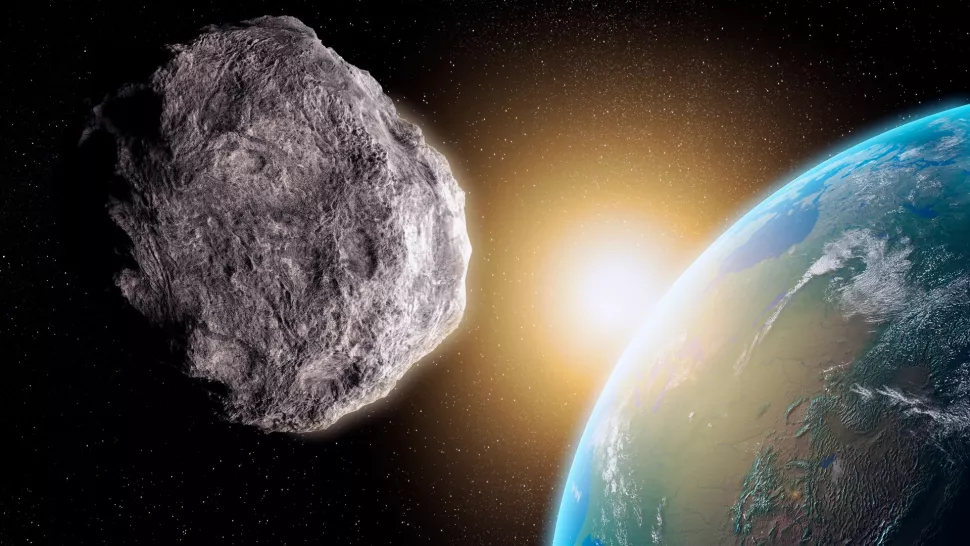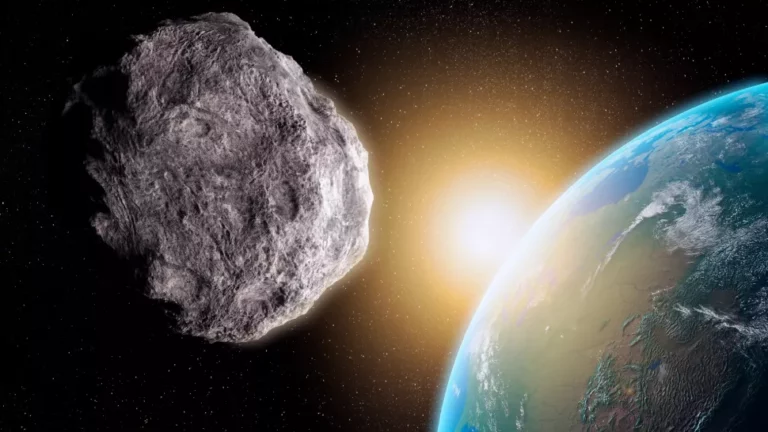NASA alerts of three asteroids, each the size of a skyscraper, approaching Earth this week, but fortunately, they will pass by without impact.
A trio of enormous asteroids, including two ‘potentially hazardous’ ones, will cross Earth’s orbit around the sun this week, according to NASA. Here’s what that means.
This week, NASA has alerted the public that Earth will encounter three massive asteroids as they fly by. Fortunately, the nearest asteroid will be 2.2 million miles (3.5 million kilometers) away from Earth, which is about ten times the average distance between the Earth and the moon.

One of the asteroids, named 2012 DK31, will pass by Earth on Monday (Feb. 27) from a distance of about 3 million miles (4.8 million km). This asteroid is approximately 450 feet (137 meters) in diameter, equivalent to the height of a 40-story building, and its orbit intersects with Earth’s orbit every few years.
While the asteroid poses no immediate danger to Earth, it has been classified as a potentially hazardous asteroid (PHA) by NASA. This means that it is large enough and close enough to Earth that it could cause significant damage if its trajectory were to change, resulting in a collision. PHAs are generally considered to be asteroids with a diameter greater than 450 feet and orbiting within 4.6 million miles (7.5 million km) of Earth. NASA has plotted the asteroid’s path for the next 200 years, and no collisions are expected to occur.
This week, three large asteroids are set to pass by Earth, adding to the millions of space rocks that roam our solar system. Fortunately, according to NASA, none of them pose any danger to our planet. The closest asteroid, called 2012 DK31 and measuring about 450 feet (137 meters) in width, will fly past Earth on Monday (Feb. 27) at a distance of 3 million miles (4.8 million km). Although classified as a potentially hazardous asteroid (PHA) by NASA, the agency has predicted no collisions for the next 200 years based on its mapped trajectory. On Tuesday (Feb. 28), another skyscraper-sized PHA named 2006 BE55, with similar dimensions and crossing Earth’s orbit every four or five years, will pass by at a distance of 2.2 million miles (3.5 million km). Finally, on Friday (March 3), a smaller asteroid named 2021 QW, measuring about 250 feet (76 m) across, will fly by at a distance of 3.3 million miles (5.3 million km). While not qualifying as a PHA, this space rock still makes relatively close approaches to Earth every few years.
Why do scientists closely monitor space rocks that will miss our planet by millions of miles? Even a minor change in the trajectory of an asteroid – such as being nudged by another asteroid or influenced by the gravity of a planet – could redirect nearby objects like these and send them hurtling towards Earth.
Fortunately, NASA has calculated that there are currently no known asteroids on a collision course with Earth for at least 100 years. However, if a large asteroid ever posed a direct threat to our planet, astronomers are already developing methods to deflect it. This was the driving force behind NASA’s recent Double Asteroid Redirection Test (DART) mission, which purposely crashed a spacecraft into an asteroid to alter its orbit. Although the mission did not destroy the target asteroid, it did demonstrate that a direct rocket attack could significantly modify a space rock’s trajectory.
Source:LiveScience
Do not forget to share your opinion with us to provide you with the best posts !




Marvelous, what a website it is! This web site provides valuable information to us, keep it up.
You made some really good points there. I checked on the net to learn more about the issue and found most people will go along with your views on this web site.
There is definately a great deal to know about this issue.
I really like all of the points you have made.